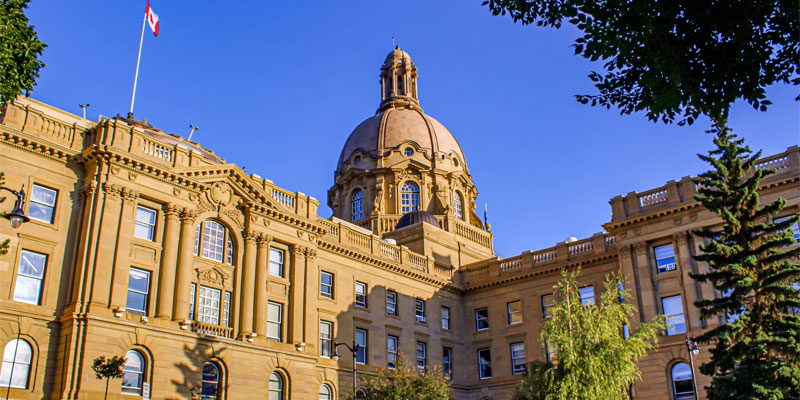Despite smaller projected budget deficit, Albertans can’t afford to discount province’s fiscal challenges

In the latest fiscal update, Alberta’s projected budget deficit was more than halved from $18.2 billion to $7.8 billion in 2021/22. While the fiscal outlook is a little brighter this year, the province’s long-standing challenges are far from over and the need for serious government action remains.
First, let’s review the new projections.
The smaller deficit, which is the difference between spending and revenue, is entirely the result of higher revenue projections than in Budget 2021, as opposed to lower spending. Higher resource revenue—the result of higher oil prices—is the main driver and increased by a projected $6.9 billion. Increased income tax revenue, federal transfers, and investment income also helped rein in the projected deficit.
As a result, Alberta is expected to accumulate a little less debt. Specifically, net debt (which adjusts for financial assets, such as the Heritage Fund) is a projected to reach $69.8 billion in 2021/22, $9.4 billion less than Budget 2021 projections.
But before you pop the champagne, it’s important to recognize that even if these revenues materialize, Alberta’s fiscal woes are far from over. To address these deep-seated challenges, the government will need to take a proactive approach to fix the problems that created them.
Let’s go back to 2007/08, when Alberta held $35.0 billion more in financial assets than it carried in debt. This earned the province its coveted “debt-free” status—the only province to hold the title at the time. Since then, Alberta ran budget deficits nearly every year. The province officially lost its debt-free status in 2016/17 and has continued to rack up debt since then.
The root cause of these deficits was unsustainable spending increases by successive provincial governments. These spending increases were frequently greater than what would be needed to offset the general rise in price levels (i.e. inflation) and the growth in the province’s population, meaning that per-person program spending routinely increased.
Consider that real per-person program spending increased from $11,246 in 2006/07 to $13,198 per person in 2019/20 (pre-COVID). For perspective, that’s about $1,900 more per person than neighboring B.C. spent and about $2,500 more per person than Ontario spent that year.
Because these spending increases more often than not also outpaced increases in provincial revenues, higher spending was financed by borrowing (i.e. debt), which is simply the deferral of taxes to the future.
This has important consequences. For instance, Albertans have to pay interest on government debt. Provincial government debt-interest payments are projected to cost Albertan’s $2.6 billion in 2021/22 alone. That means nearly five per cent of all government revenue will go towards financing provincial debt this year. That’s money that will be unavailable for important priorities such as health care, education or pro-growth tax relief.
A boost in projected revenues this year have reduced the expected deficit for 2021/22, but this will only provide a small amount of relief. Government spending must be addressed to fix Alberta’s big fiscal challenges.

